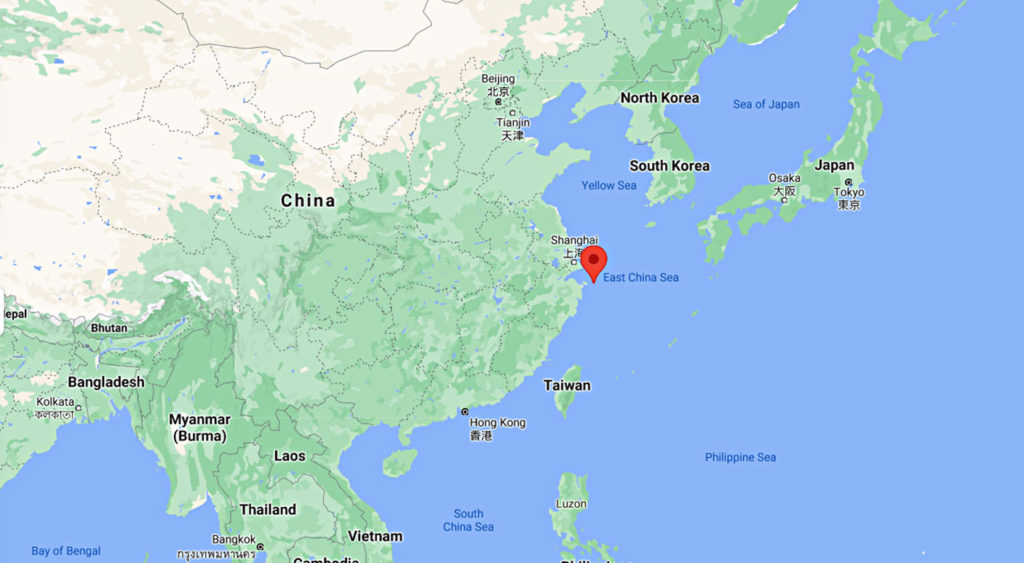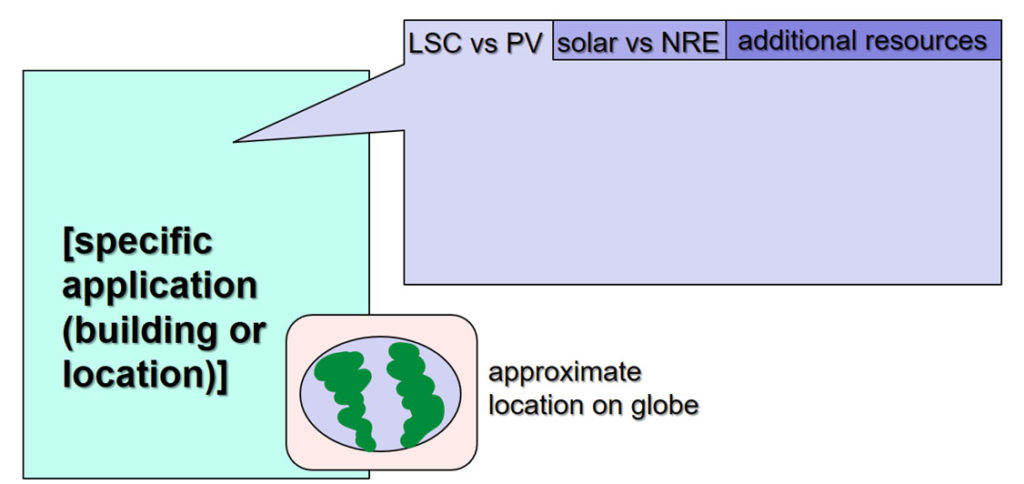Global Applications of Luminescent Solar Concentrators
Sahana Sundar
August 2021
Summary
I conducted research relating to polymer-grafted gold nanoparticles in polymer films. These polymer nanocomposites and similar materials have unique optical properties and can be used in novel solar energy devices like luminescent solar concentrators (LSCs). My global context project examines potential applications of LSCs around the world and compares them to conventional PV solar cells and nonrenewable energy sources.
Overview of luminescent solar concentrators (LSCs)
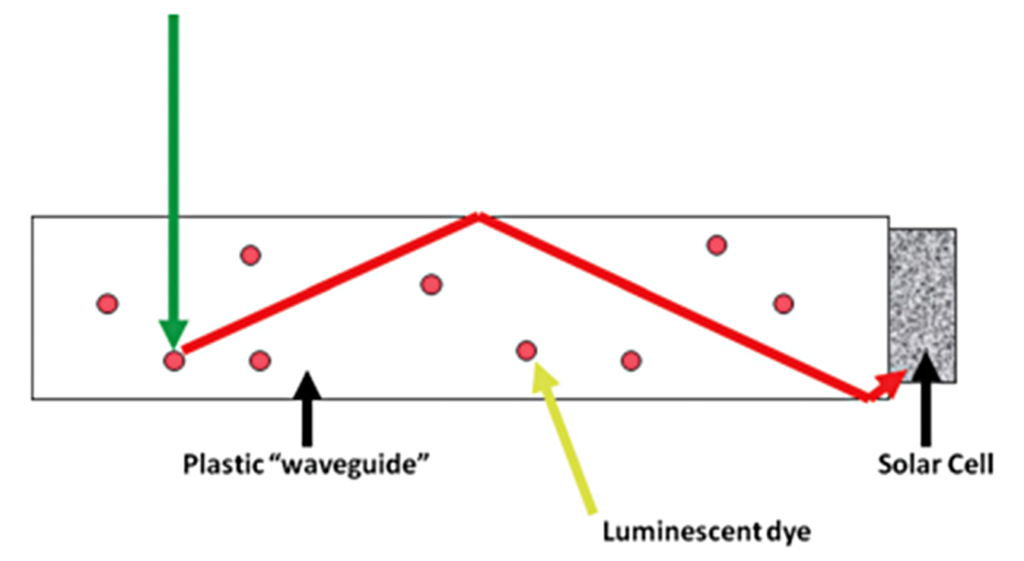
Source: Debije, Michael G.; Verbunt, Paul P.C.; “Thirty Years of Luminescent Solar Concentrator Research: Solar Energy for the Built Environment.” Advanced Energy Materials. 2 (2012): 12-35. Web.
What are luminescent solar concentrators (LSCs)?
The general design of a LSC includes a transparent film embedded with luminescent particles, plus small solar cells lining the edges of the film. Sunlight enters the main body of the device (the transparent waveguide), is absorbed by the particles, then re-emitted at a longer wavelength. The light is trapped in the material due to total internal reflection until it is redirected to the edges and absorbed by the solar cell. This device is called a solar concentrator since it effectively takes in light from a large area and concentrates it to the narrow panels at the edges.
LSCs are often more useful in solar energy applications than conventional solar panels. Since LSCs are transparent, they can even be used over windows or glass surfaces without completely blocking light transmission. As solar concentrators, they also tend to perform better than conventional PV solar cells when in diffuse light (not direct sunlight).
Where LSCs potentially could be used around the world
Example 1: Commercial Bank of Ethiopia Headquarters (CBE Tower in Addis Ababa, Ethiopia)
The CBE building is a new skyscraper in Ethiopia. It is 198 meters tall (650 feet), making it the tallest building in Ethiopia. Most of the exterior of the building is windows. While conventional PV solar cells would block the windows, LSCs could be used instead.
Ethiopia gets an average solar radiation of 5.2 kWh/m2/day., which is well-suited to solar energy. However, most of Ethiopia’s energy comes from biomass and oil, and only a small fraction of the potential solar energy is captured.
Over 50% of the population does not have access to electricity, especially in remote rural areas that aren’t connected to the electrical grid. Solar energy is promising for off-grid applications, as it doesn’t require fuel transportation or extensive connections to the main grid. There have been some efforts to install PV cells in rural electrification projects, but those have struggled due to lacking infrastructure and economic reasons. In addition to urban applications like the CBE Tower, LSCs also could be helpful in off-grid rural installations due to their potential low production costs.
Example 2: Dongfushan Island
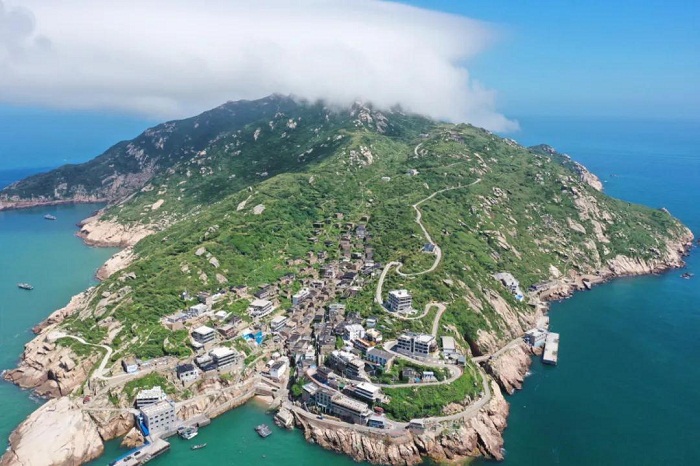
Dongfushan Island is a small island located in the East China Sea. Solar energy on Dongfushan is partially limited by weather, as PV cells require direct sunlight and can’t function well in foggy weather. However, LSCs can function well with direct and diffuse light and would be better at gathering solar energy in different weather conditions.
Small islands like Dongfushan Island typically don’t have reliable connections to mainland electrical grids. Many islands rely on diesel engines (DE) for energy, but diesel is nonrenewable, very harmful to the environment, and expensive to transport to islands. Dongfushan and other islands instead create microgrids and utilize their renewable energy sources (wind, solar, and hydropower). These renewable energy sources have proven to be much more reliable and can produce significant amounts of energy. Several examples of islands around the world have similarly transitioned to take advantage of their renewable energy sources (see sources for additional information).
Prototype web project design for sharing these ideas
Template
Example entry with image, location and tabs containing relevant information
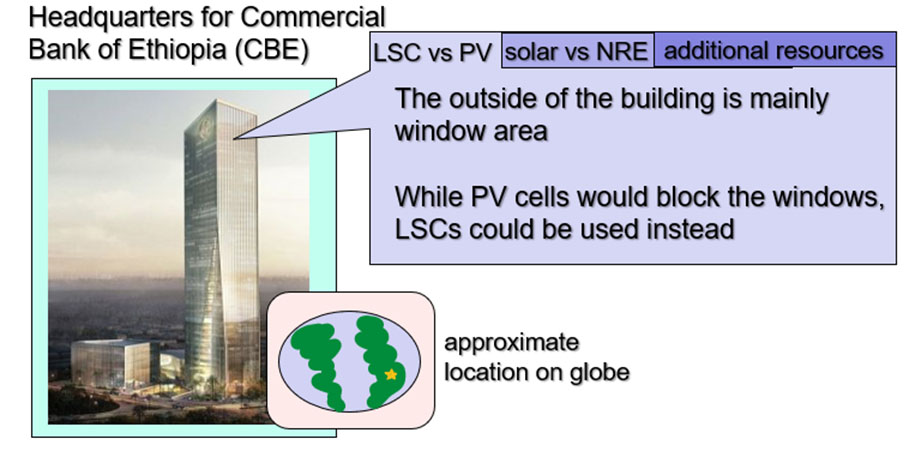
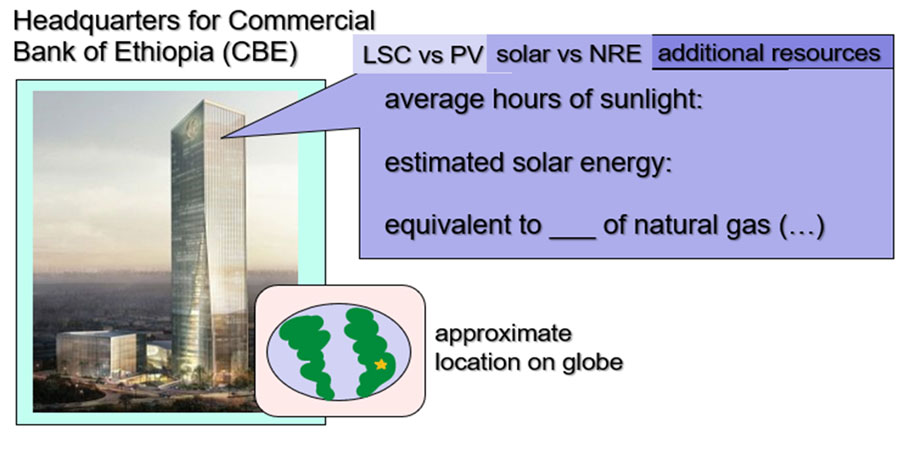
Bio
Sahana Sundar is a junior in the Materials Science Department at Penn Engineering. She has conducted research in Dr. Composto’s lab during summers 2020 and 2021 on properties of polymer nanocomposite films. She is an orchestra member and Librarian/Orchestra Manager of the Penn Singers.
References & Acknowledgements
References
Commercial Bank of Ethiopia
https://www.constructionkenya.com/2347/ethiopia-tallest-building/
https://energypedia.info/wiki/Ethiopia_Energy_Situation#Fossil_Fuels
Dongfushan Island
Bo Zhao, Jian Chen, Leiqi Zhang, Xuesong Zhang, Ruwen Qin, Xiangning Lin; “Three representative island microgrids in the East China Sea: Key technologies and experiences.” Renewable and Sustainable Energy Reviews. 96 (2018): 262-274, ISSN 1364-0321, https://doi.org/10.1016/j.rser.2018.07.051. (https://www.sciencedirect.com/science/article/pii/S1364032118305604)
Includes information about ten other renewable energy island case studies https://rmi.org/wp-content/uploads/2017/04/Islands_Microgrid_Profiles_Islands_Global_Remote_Communities_CaseStudy_2015.pdf
Information about solar and renewable energy
Overview of LSC technology and development: Debije, Michael G.; Verbunt, Paul P.C.; “Thirty Years of Luminescent Solar Concentrator Research: Solar Energy for the Built Environment.” Advanced Energy Materials. 2 (2012): 12-35. Web.
Introductory lesson plan on LSCs: https://www.cei.washington.edu/education/lesson-plans-resources/luminescent-solar-concentrator/
10-minute video that compares the safety/health impacts of different kinds of renewable and nonrenewable energy: https://www.youtube.com/watch?v=Jzfpyo-q-RM
Solar energy simulator that compares price, energy production, and other relevant factors for solar installation in various locations around the world: https://www.irena.org/solarcity
For more information about global access to electricity: https://ourworldindata.org/energy-access#what-share-of-people-have-access-to-electricity
UN Sustainable Development Goal 7: https://sdgs.un.org/goals/goal7
Article discussing various challenges for increasing energy access, especially in the context of UN Sustainable Development Goal 7: https://www.weforum.org/agenda/2019/11/energy-poverty-africa-sdg7/
Acknowledgements
This work was supported by National Science Foundation Partnerships in International Research and Education funding (Award # 1545884). Additionally, I would like to thank Dr. Russell Composto, Dr. Connor Bilchak, Aria Zhang, and the other members of the Composto lab group for their assistance and guidance.


